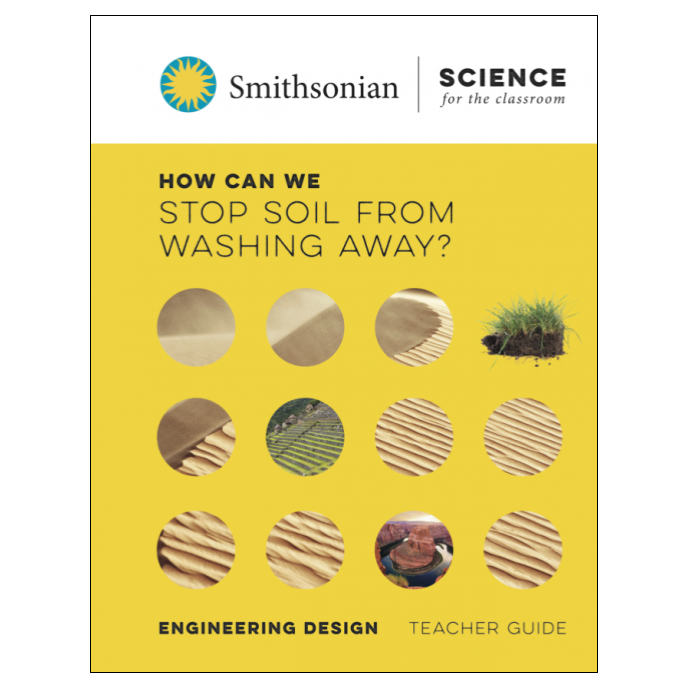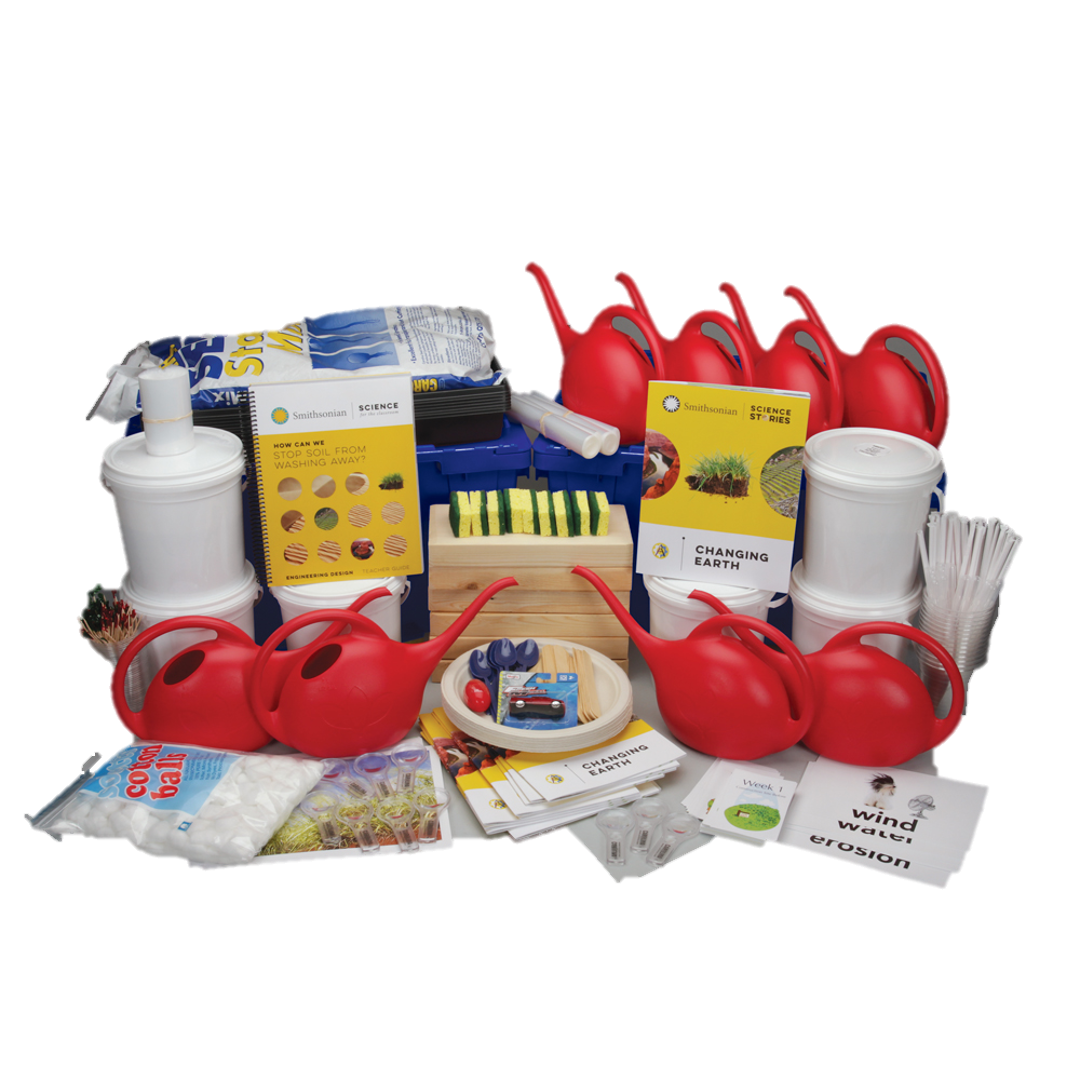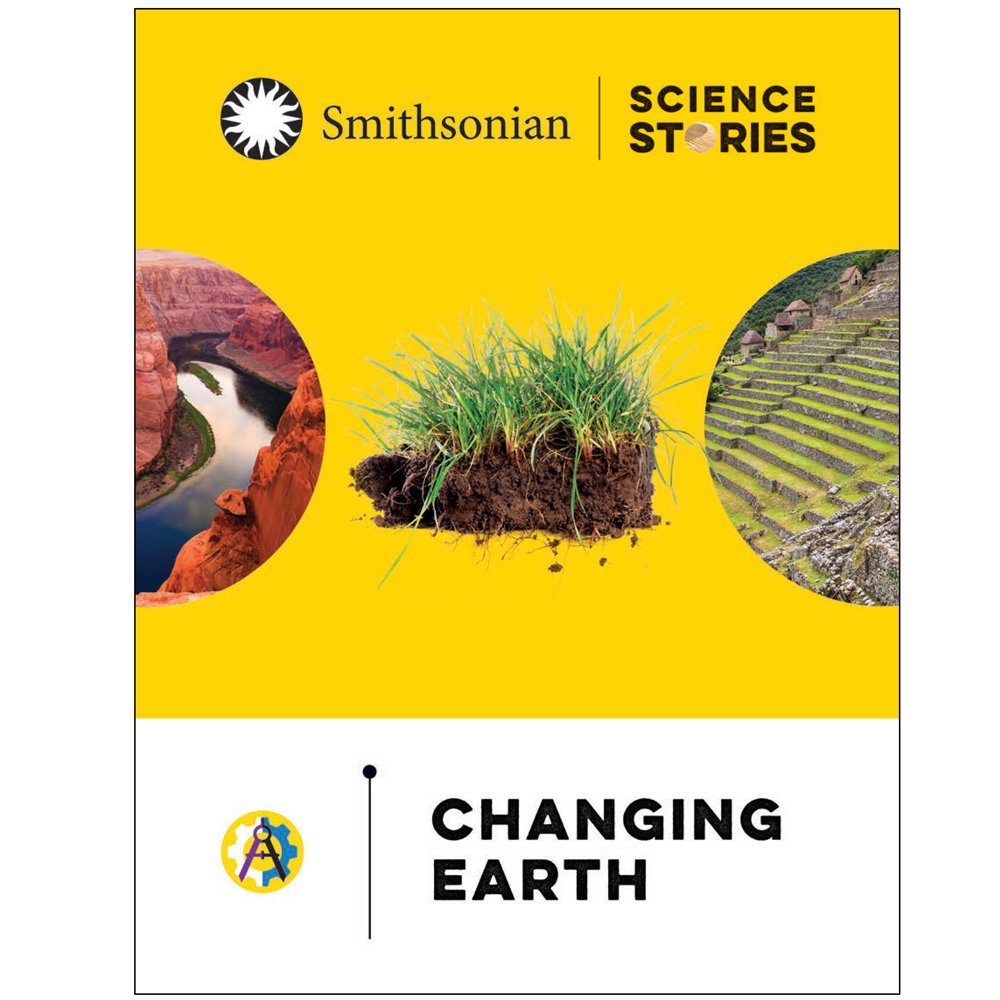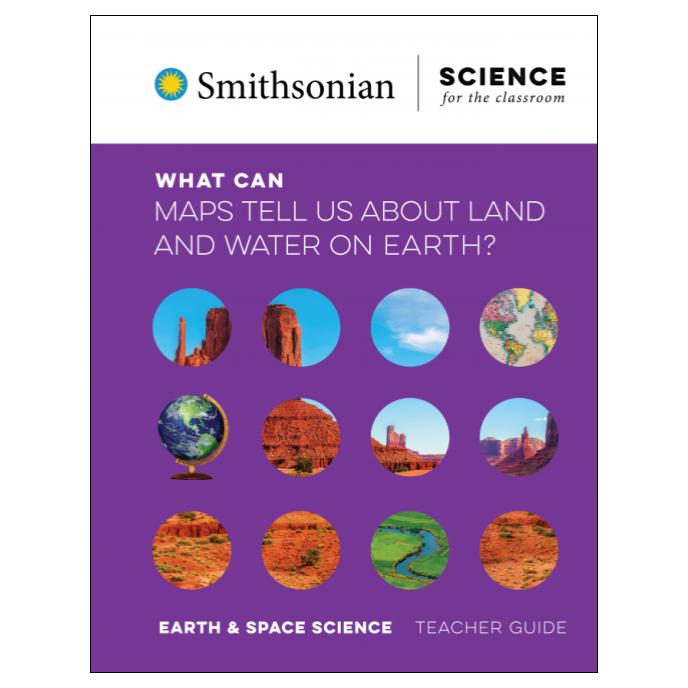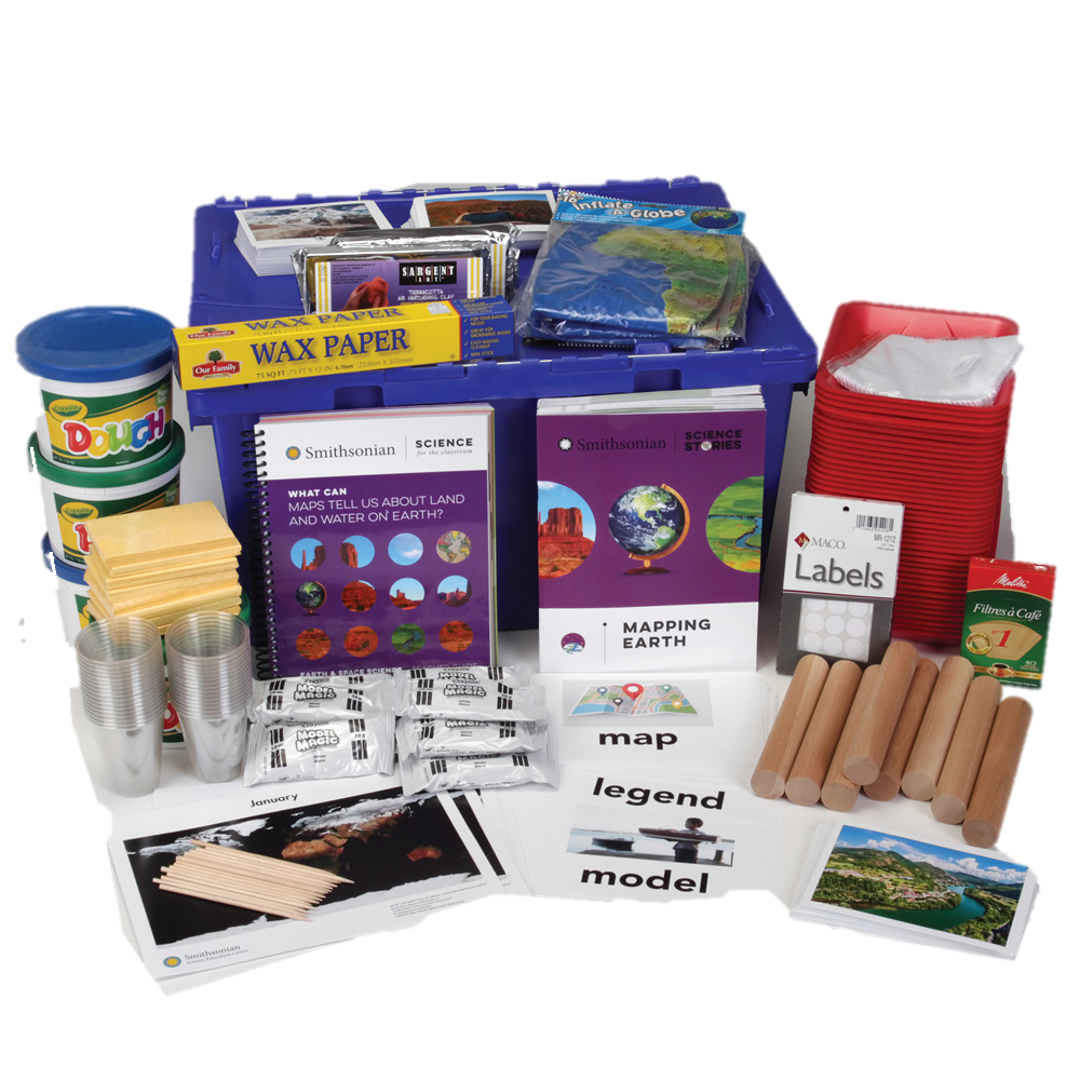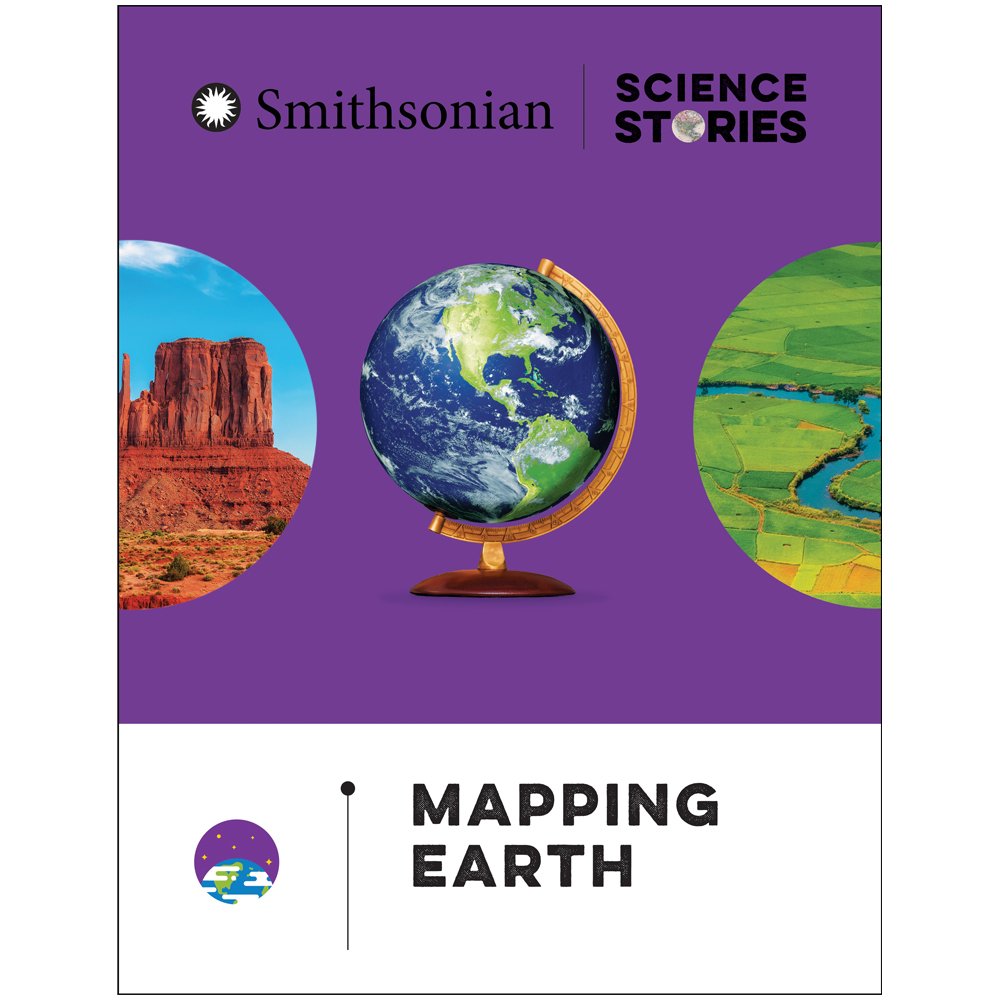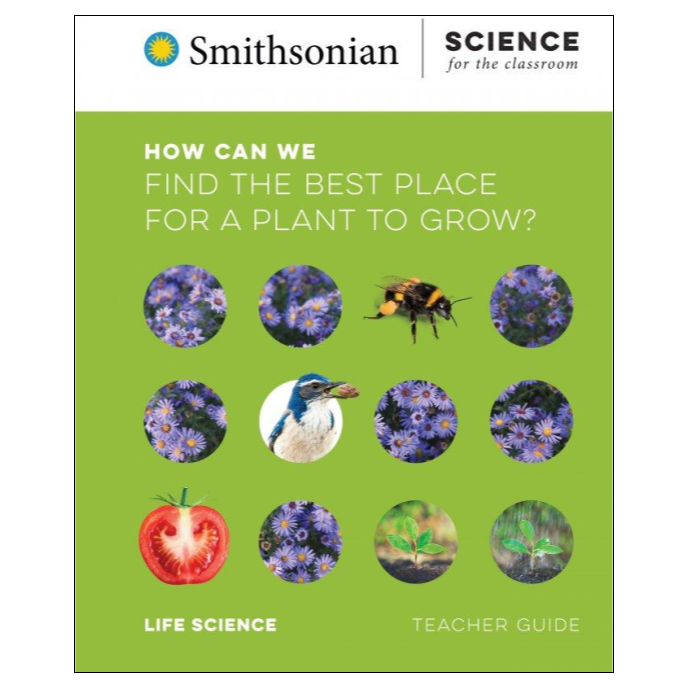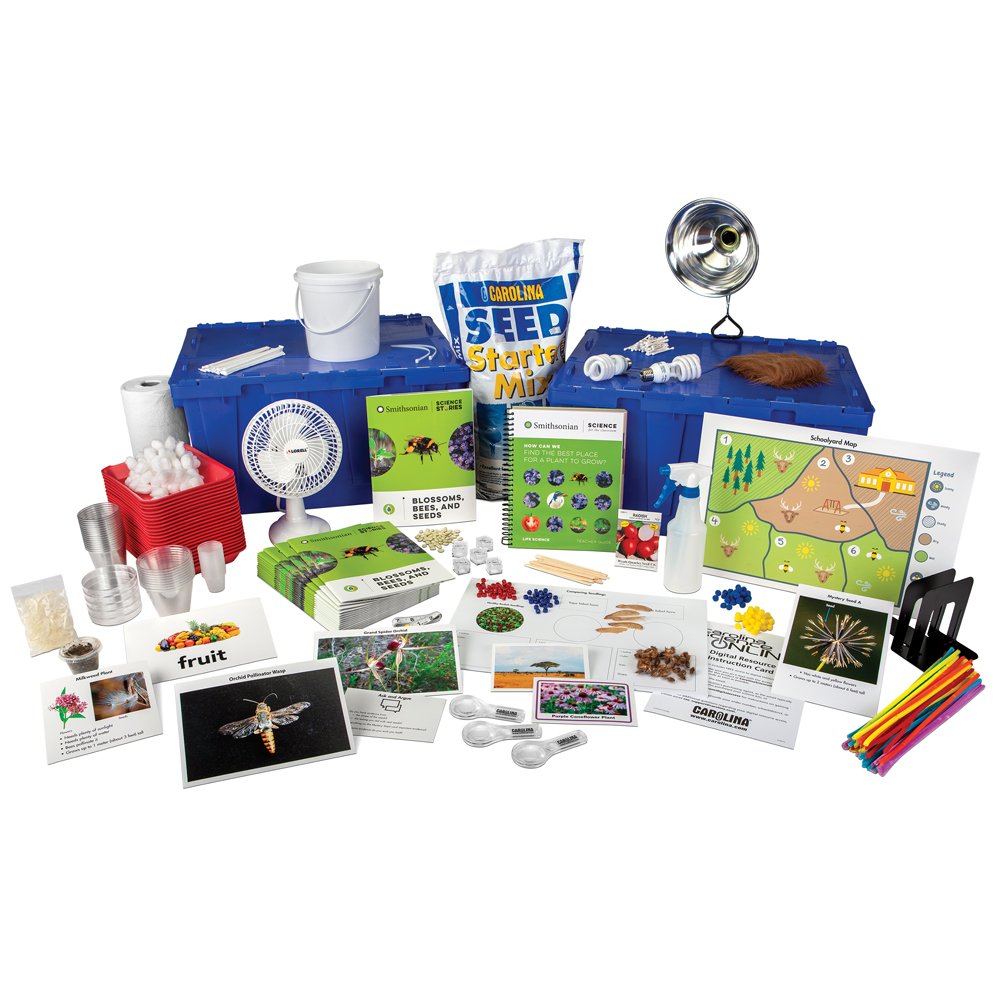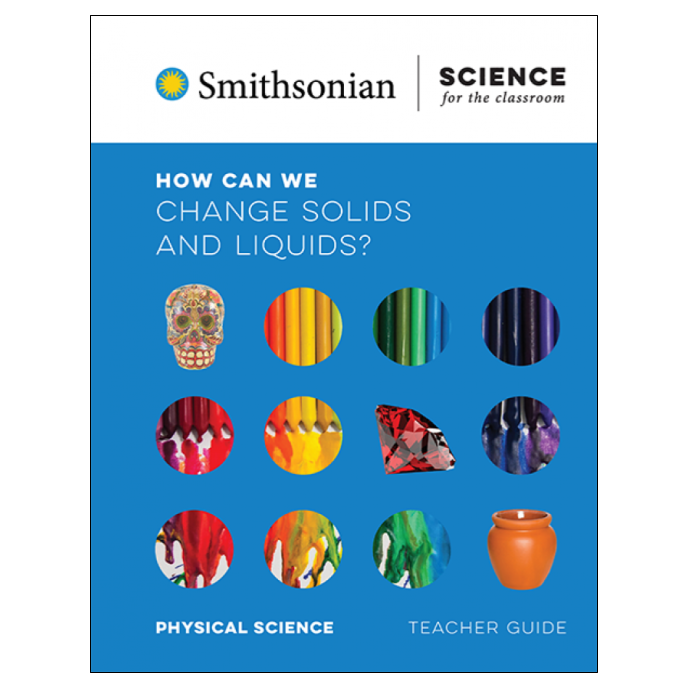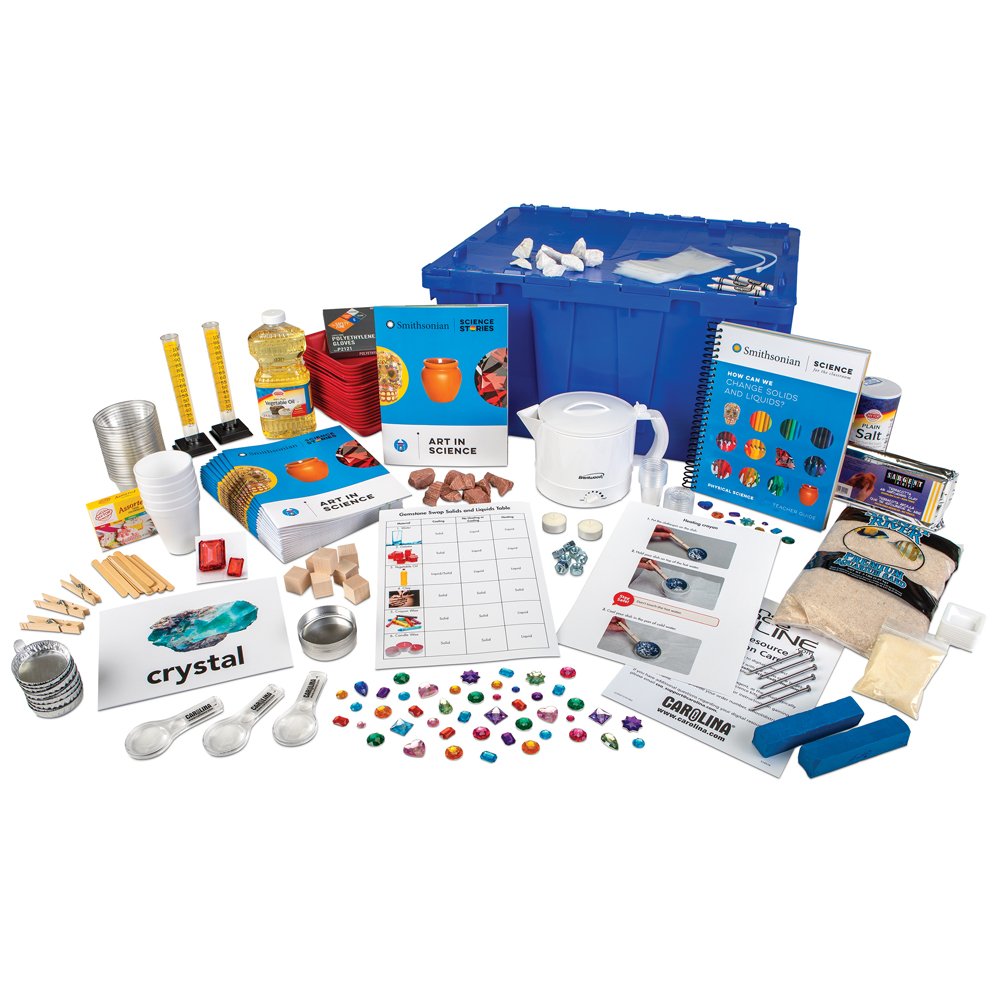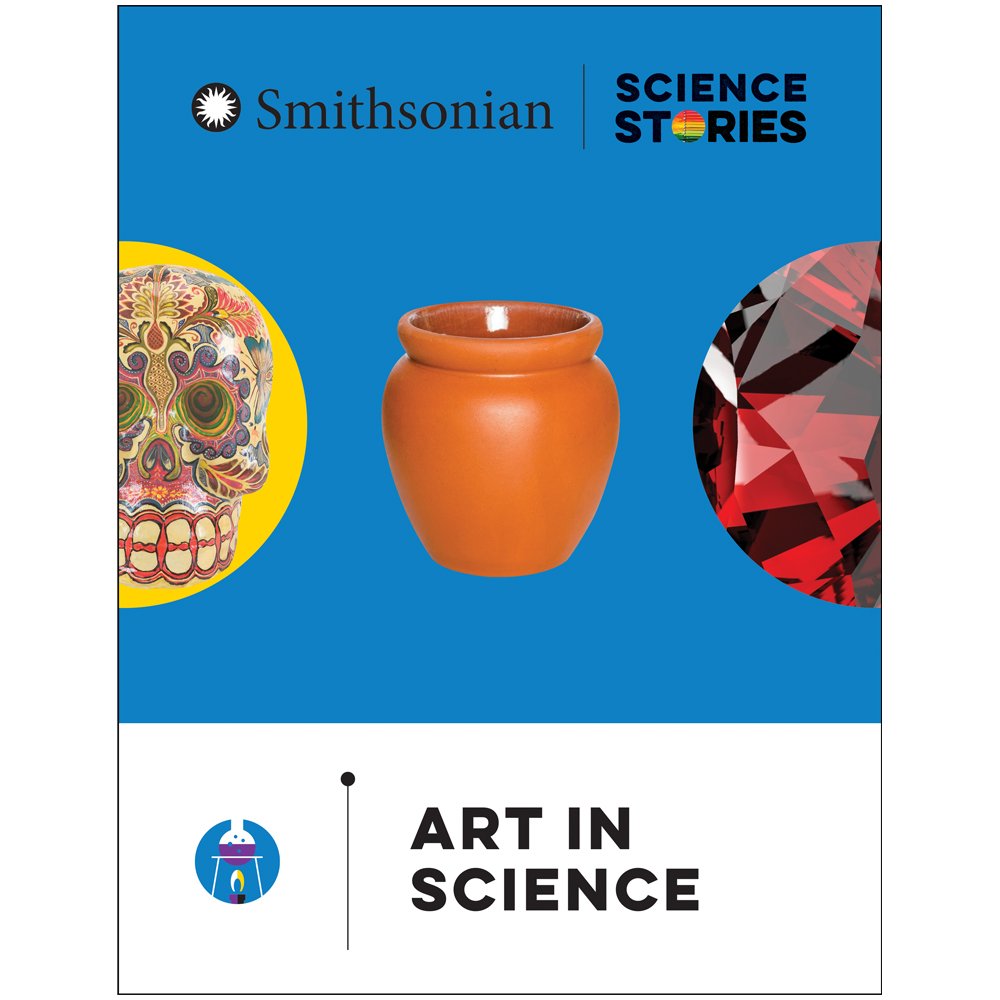EINSTEIN PROJECT CURRICULUM OPTIONS
Second Grade
how can we stop soil from washing away?
Engineering Design
What’s Included?
Teacher's Guide (1 spiral bound & digital)
Student Readers (12 on grade, 4 below grade, unlimited digital access)
Interactive Materials for 32 students (working in pairs)
UNIT DESCRIPTION
10 lessons | 13 days of instruction
Over the 10 lessons in this module, students explore and collect evidence on the fast and slow ways water and wind can change the shape of land. Students examine photographs and models of certain changes in the land caused by flowing water and blowing wind. They engage in a literacy activity that highlights the successful and unsuccessful ways people have attempted to minimize the impact water and wind have on the land. Then they use a stream table as a model to compare multiple solutions designed to prevent water from changing the shape of the land. The end-of-module summative performance assessment asks students to apply the evidence gathered in previous lessons to a scenario-based engineering design challenge.
Learn more in the Unit Storyline.
SINGLE KIT | $356
All materials for 1 class
ADD-ON | $116
Consumables for 1 class
what can maps tell us about water on earth?
Earth & Space Science
What’s Included?
Teacher's Guide (1 spiral bound & digital)
Student Readers (4 print and digital access)
Student Big Book (1)
Interactive Materials for 24 students (working in pairs)
UNIT DESCRIPTION
10 lessons | 13 days of instruction
In 10 lessons over 13 class sessions, students explore the patterns of land and water on Earth and how they can represent those patterns with models, including maps. Exploring the kinds of land and water on Earth, students use their observations to create definitions of each kind of land and water, then demonstrate their understanding by developing a three-dimensional model. Students plan and carry out an investigation into the properties of solid and liquid water to explore the patterns of water on Earth, providing the knowledge to explain the patterns of solid water on Earth that they observe in satellite images. Students continue to obtain and use information from examples of patterns of land and water to further develop their three-dimensional models. Students read about maps from different cultures, exploring how mapmakers use symbols to show patterns of land and water, then create a custom legend using their own symbols. During the science challenge performance assessment, students make a two-dimensional map of their three-dimensional models of land and water. Students test their ability to interpret how the maps represent patterns by trading maps and matching the map to the correct model of land and water.
Learn more in the Unit Storyline.
SINGLE KIT | $321
All materials for 1 class
ADD-ON | $123
Consumables for 1 class
how can we find the best place for a plant to grow?
Life Science
What’s Included?
Teacher's Guide (1 spiral bound & digital)
Student Readers (4 print and digital access)
Student Big Book (1)
Interactive Materials for 24 students (working in pairs)
Living Materials (Shipped direct from the supplier)
UNIT DESCRIPTION
10 lessons | 13 days of instruction
In 10 lessons over 13 class sessions, students investigate what plants need to live, grow, and reproduce, and how these factors are parts of a system that work together in each plant's habitat. Throughout the module, students will be aiming to understand an overarching phenomenon: Why is the number of grand spider orchids in Western Australia decreasing? They begin by asking questions about what makes a good habitat for a plant and observing how different plant parts have structures that relate to their function in helping the plant thrive. Students collaboratively plan and carry out investigations about whether plants need water and/or light to grow. As students make observations and use them as evidence to make claims, they also begin to learn about the interconnectedness of plants and animals in habitats. They look at real bees to discern structures that help with pollination, and engineer hand pollinators that mimic bee structures through asking questions about how to solve the problem of pollinator population decline. Students then investigate how seed structure relates to dispersal method, and use a computer simulation to investigate how different animals and plants live in different places and work together as parts in a system. In the science challenge, students use their knowledge of plant needs to decide where to plant two types of seeds, and analyze others' claims. Finally, students use their knowledge and evidence accumulated throughout the lessons to construct an explanation for why there may be fewer and fewer grand spider orchids each year.
Learn more in the Unit Storyline.
SINGLE KIT | $408
All materials for 1 class
ADD-ON | $162
Consumables for 1 class
how can we change solids and liquids?
Physical Science
What’s Included?
Teacher's Guide (1 spiral bound & digital)
Student Readers (4 print and digital access)
Student Big Book (1)
Interactive Materials for 24 students (working in pairs)
LIMITED AVAILABILTY: Contact einstein@einsteinproject.org for more information
UNIT DESCRIPTION
10 lessons | 13 days of instruction
In 10 lessons over 13 class sessions, students explore how solids and liquids can change by heating, cooling, building up, carving, and taking apart. They investigate several properties of solids and liquids including color, shape, and hardness. They learn through a text that hard materials can be carved, and soft materials can be built up. They build a sculpture and take it apart to make another sculpture with different properties (this leads into a later understanding of particles). They compare the properties of several liquids and solids and argue from evidence for whether sand is a solid or a liquid. They use what they have learned about solids and liquids to test different materials for a cold pack. They explore what happens when materials are heated and observe that a wax crayon still works as a crayon when it is heated and cooled. They obtain information from a text to construct an explanation for how a silver necklace is made by heating and cooling different materials. In the culminating science challenge, students choose the best material for a replica gemstone based on its properties.
Learn more in the Unit Storyline.
SINGLE KIT | $327
All materials for 1 class
ADD-ON | $121
Consumables for 1 class



